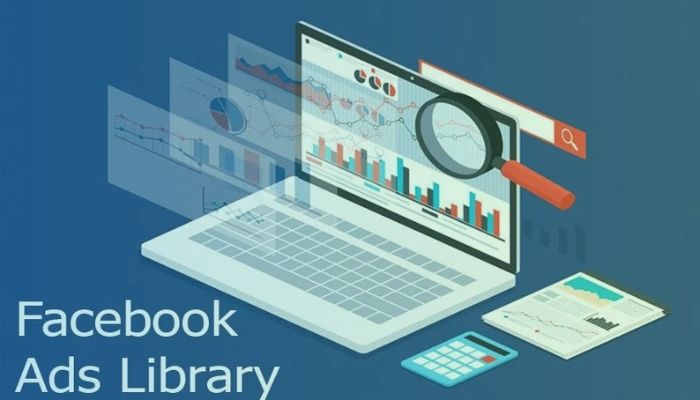
Facebook Ads Library, also known as the FacebookAds Library, is a very important source of information that allows advertisers, researchers and general users to explore the ad campaigns running on Facebook and Instagram
From finding inspiration to tracking competitors and evaluating the performance of your own campaigns, the Facebook Ads Library has become an essential tool for anyone involved in digital marketing.
In this article, we will explore in depth what the Facebook Ads Library is, how it works and, more importantly, how you can use it to improve your Social Ads strategies on these platforms.
The Facebook Ads Library is a tool that promotes transparency by providing users with detailed information about advertising campaigns running on Facebook and Instagram platforms.
Facebook Ads Library Allows you to explore both active and inactive ads, as well as access valuable information about advertisers and their advertising spend.
This tool allows you to analyze ads that have been shown on Facebook and Instagram, including ad content and estimated spending by advertisers.
The Facebook Ads Library is an essential source for tracking advertising trends, evaluating campaign strategies and discovering who is behind the ads you find on these platforms.

The facebook library promotes transparency by providing information on who is behind an advertising campaign and how much they are investing.
This is especially important in the case of political and informational ads, as it helps users understand who is funding these ads and what their reach is.
Companies and advertisers can use this tool to research their competitors.
They can examine other companies’ advertising strategies, identify tactics that work and adapt their own strategies accordingly. This allows you to keep up with industry-leading practices and improve the effectiveness of your campaigns.
Facebook Ads Library allows users to track trends in digital advertising. They can identify what types of ads are popular at any given time, what creative approaches are proving successful, and how audience preferences are evolving.
This is valuable to keep up with changing trends in the online advertising world.
In the context of political advertising, the Facebook Ads Library plays a crucial role in election transparency.
It allows voters and election authorities to examine who is funding political ads, who they are targeting and how much is being spent on these campaigns. This contributes to integrity and accountability in electoral processes.
Advertisers can use Facebook’s Ad Library as a source of inspiration to create effective ads. They can examine successful examples of ads, study their creative and strategic elements, and adapt those ideas to their own campaigns.
Users can use Facebook’s Ad Library to verify the authenticity of ads and information they see in their news feeds.
This is particularly relevant in the context of disinformation and fake news, as it provides a way to know the source and details of an advertising or information campaign.
The Facebook Ads Library works as follows:
the three main elements of the Facebook Ad Library:
In the Facebook Ads Library, ads are fundamental elements. This section allows you to see the full content of the ads that have been shown on Facebook and Instagram. This includes the text of the ad, the images and the videos that compose it.
It also provides details on when the ad was first seen, how many times it has been shown and in which geographic locations it has been broadcast.
This information is valuable for advertisers who want to analyze effective advertising strategies and for users who want to understand the content of the ads they find in their feeds.
In this section of the Ad Library, you can obtain information about the advertisers behind the advertising campaigns. The name of the Facebook or Instagram page representing the advertiser is included, as well as its location.
This information is useful to identify who is promoting a particular advertisement and where the headquarters of the advertising entity or company is located.
Facebook’s Ad Library provides additional information on ads related to politics and social issues. In this section, you can find details on who is funding these ads and what specific audience they are targeting.
This is essential for transparency in political advertising and disclosure of information on important issues. It allows users to understand who is behind political or social messages and who they are trying to influence.
To evaluate whether an ad is performing well in the Facebook Ads Library, you can consider several key indicators:
If an ad receives a lot of interactions, such as “likes,” comments and shares, it is likely to be generating interest and engagement among the audience. A high level of interaction is usually an indicator of good performance.
See how long the ad has been active. If it has been running for an extended period of time, it is likely to be performing well. Ads that run for a long time usually indicate that advertisers are satisfied with its performance.
Examine the target audience for the advertisement. If the ad is reaching the desired audience and generating interest in that group, it is a positive sign of good performance.
Consider how much the advertiser has spent on the ad. If they are investing a significant amount of money in a specific ad, they are likely seeing positive results and consider the ad to be performing well.
Analyze the quality of the ad content, such as design, copy and call to action. An ad with a clear and compelling message tends to perform better.
If the objective of the ad is to lead users to perform a specific action, such as visiting a website, registering or making a purchase, check whether the ad achieves these objectives. Conversion tracking can indicate whether the ad is performing well in terms of concrete results.
See how the ad’s performance compares to other similar ads in the same industry or niche. If it outperforms the competition in terms of interaction and results, it is a positive sign.
Read the comments and user reactions to the announcement. If the responses are mostly positive and show that the ad has had an impact on the audience, it is an indicator of good performance.
It should be noted that the performance of an ad may vary depending on the objective of the campaign and other factors.
What is considered good performance will depend on the specific objectives of the campaign and the industry you are in. Therefore, it is crucial to define clear goals before evaluating the performance of an ad.
Unfortunately, it is not possible to save Facebook ads directly through the platform. Facebook does not offer a specific “save” feature for ads on its site. However, you can track ads or take screenshots to save information about ads that interest you. Here’s how to do it:
You can take screenshots of the ads you want to save. This includes ad content, design, copy and any other relevant details. Organize these screenshots into folders for future reference.
Create a document or note on your device or computer where you can copy and paste links to ads or write down details about the ads you are interested in. This will allow you to have a quick reference.
If you click on an ad and it takes you to a landing page, you can save the link to that page in your bookmarks or in a note. This is especially useful if you are interested in following a campaign or learning more about an advertised product or service.
There are programs and browser extensions that allow you to capture and save complete web pages. If you want to save a landing page of an advertisement, this could be useful.
Some third-party tools can help you track ads and store information about them. These tools can provide more advanced analysis.
By using this tool effectively, you will be able to improve your Social Ads strategies, keep up to date with trends and encourage accountability in the online advertising world. Facebook’s Ad Library has become an essential resource in an ever-changing advertising environment.
Interested in improving your marketing strategies? We are here to help you. Get to know us better and discover how our digital marketing and web development agency can help you in your projects. Contact us!
If you want to have the website you want or increase the online visibility of your brand, we know how to do it.
Shall we start today?
Leave a Reply